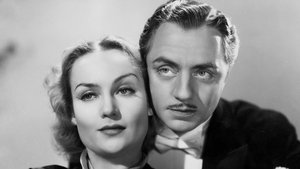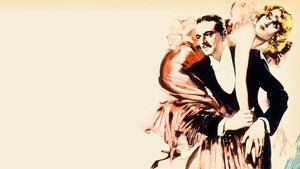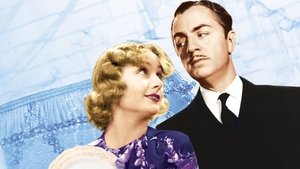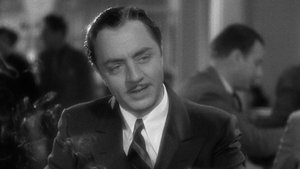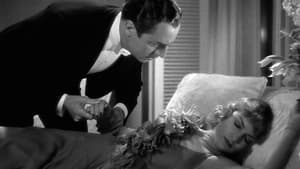Contact: info@alwanfilm.com
Video Sources 0 Views
- Watch trailer
- My Man Godfrey 1936

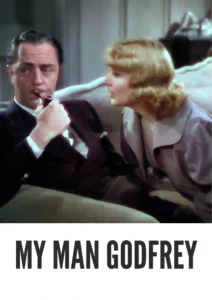
Synopsis
Table of Contents
ToggleReview: My Man Godfrey 1936 Colorized – A Classic Screwball Comedy Rediscovered in Brilliant Color

Introduction
“My Man Godfrey” (1936) is a delightful romp through the absurdities of high society, infused with wit, charm, and a touch of whimsy. In this article, we’ll explore the significance of this early colored film, examining its impact on audiences and its enduring legacy in the realm of screwball comedy.
Check The Full Colorized Movies List
Check Our Colorized Movies Trailer Channel
Understanding My Man Godfrey 1936 Colorized: Director, Cast, and Genre
Directed by the talented Gregory La Cava, “My Man Godfrey” (1936) showcases his mastery of the screwball comedy genre, blending razor-sharp dialogue with slapstick humor to create a truly memorable cinematic experience. The film boasts a stellar cast, including William Powell and Carole Lombard, whose dynamic performances elevate the material to new heights. Set against the backdrop of the Great Depression, “My Man Godfrey” (1936) offers a biting critique of the excesses of the upper class while delivering laugh-out-loud moments that will leave audiences in stitches.
Exploring the World of My Man Godfrey 1936 Colorized: Plot and Characters
At its core, “My Man Godfrey” (1936) follows the misadventures of a down-and-out butler, played by William Powell, who finds himself embroiled in the eccentricities of a wealthy New York family. As he navigates the absurdities of their world with poise and wit, he forms an unlikely bond with the family’s free-spirited daughter, portrayed by Carole Lombard, leading to a series of hilarious misunderstandings and heartwarming moments. Along the way, the film introduces a host of colorful characters, each more eccentric than the last, who add to the chaos and comedy of the proceedings.
The Art of Film Colorization
Film colorization has long been a contentious issue in the world of cinema, with purists arguing that it compromises the artistic integrity of classic films. However, when done tastefully and with respect for the original work, colorization can breathe new life into beloved movies, offering viewers a fresh perspective on familiar stories. In the case of “My Man Godfrey” (1936), the decision to release the film in a colorized format adds to its whimsical charm, allowing audiences to experience the madcap antics of its characters in vibrant hues.
Early Colored Films: A Brief History
The history of colored films dates back to the early days of cinema, with filmmakers experimenting with various techniques to add color to their creations. From hand-painted frames to early Technicolor processes, the evolution of colored film has been marked by innovation and ingenuity, paving the way for the development of modern colorization techniques that continue to captivate audiences to this day.
My Man Godfrey 1936 and Its Early Colored Version
The decision to release “My Man Godfrey” (1936) in a colorized format was met with both anticipation and apprehension. While some welcomed the opportunity to experience the film in vibrant color, others expressed concerns about the potential impact on its visual aesthetic. Nevertheless, the early colored version of “My Man Godfrey” (1936) offers viewers a fresh perspective on the classic screwball comedy, enhancing its whimsical charm and bringing its eccentric characters to life in vivid detail.
The Debate Over Film Colorization
The debate over film colorization is a complex and multifaceted issue, with passionate arguments on both sides of the divide. Proponents argue that colorization revitalizes classic movies for modern audiences, breathing new life into timeless stories and introducing them to a new generation of viewers. Conversely, detractors maintain that colorization detracts from the authenticity of the original work, altering the director’s artistic intent and diminishing the historical significance of the film.
Examining My Man Godfrey 1936 as an Early Colored Film
As with any colorized classic, the impact of colorization on “My Man Godfrey” (1936) is a matter of personal interpretation. Some may argue that it enhances the film’s visual appeal and immerses viewers in its world, while others may feel that it detracts from the whimsical charm of the original black and white version. Regardless of one’s stance on the issue, there’s no denying the enduring power of “My Man Godfrey” (1936) as a timeless screwball comedy that continues to delight audiences with its witty dialogue and zany antics.
Influence and Legacy: My Man Godfrey 1936 Colorized’s Impact on Cinema
“My Man Godfrey” (1936) has left an indelible mark on the world of cinema, inspiring countless filmmakers and captivating audiences with its timeless humor and biting social commentary. From its memorable performances to its sharp wit, the film continues to resonate with viewers of all ages, reaffirming its status as a beloved classic of the screwball comedy genre.
Director’s Cinematic Legacy: Beyond My Man Godfrey 1936 Colorized
Gregory La Cava’s influence extends far beyond “My Man Godfrey” (1936), with a diverse body of work that continues to captivate audiences around the globe. From “Stage Door” to “Living in a Big Way,” La Cava’s films are celebrated for their wit, charm, and sophistication, solidifying his legacy as one of the preeminent directors of Hollywood’s Golden Age. Through his groundbreaking work, La Cava has left an indelible imprint on the world of cinema, inspiring generations of filmmakers to follow in his footsteps.
Themes Explored in My My Man Godfrey 1936 Colorized
“My Man Godfrey” (1936) explores a myriad of themes, from the absurdity of social conventions to the transformative power of love and redemption. Through its riotous humor and heartfelt moments, the film invites viewers to ponder the complexities of human nature and the universal desire for connection and belonging. As audiences laugh along with the antics of its eccentric characters, they are reminded of the enduring truths that bind us together and the timeless appeal of a good old-fashioned comedy.
Reception and Controversy Surrounding My Man Godfrey 1936 Colorized
Upon its release, “My Man Godfrey” (1936) received widespread critical acclaim, with many praising its witty dialogue, spirited performances, and sharp social satire. However, the decision to release the film in a colorized format sparked debate among purists, reigniting the age-old discussion surrounding film preservation and artistic integrity. Despite the controversy, “My Man Godfrey” (1936) remains a beloved classic that continues to entertain audiences with its timeless humor and biting social commentary.
Where to Watch My Man Godfrey 1936 Colorized Online
For those eager to experience the timeless charm of “My Man Godfrey” (1936), the film is readily available on popular streaming platforms such as Netflix, Amazon Prime, and Hulu. Whether you choose to watch it in its original black and white format or the early colored version, “My Man Godfrey” (1936) promises to transport you to a world of laughter and love, where anything is possible and the only limit is your imagination.
FAQs About My Man Godfrey 1936 Colorized
Q: Is “My Man Godfrey” (1936) based on a true story? A: No, “My Man Godfrey” (1936) is a fictional tale crafted by screenwriter Eric Hatch, who drew inspiration from his own experiences and observations of high society.
Q: Who are the main actors in “My Man Godfrey” (1936)? A: “My Man Godfrey” (1936) features an ensemble cast led by the talented William Powell and Carole Lombard, whose dynamic performances bring the eccentric characters to life with humor and heart.
Q: What awards did “My Man Godfrey” (1936) win? A: “My Man Godfrey” (1936) received critical acclaim for its witty screenplay and spirited performances, earning nominations for several Academy Awards, including Best Actor and Best Supporting Actress.
Q: Why was “My Man Godfrey” (1936) released in a colorized format? A: The decision to release “My Man Godfrey” (1936) in color was made to introduce the film to a new generation of viewers and enhance its visual appeal for modern audiences. While the choice to colorize the film sparked debate among purists, it ultimately allowed “My Man Godfrey” (1936) to reach a wider audience and ensure its continued relevance in the annals of cinematic history.
Conclusion
“My Man Godfrey” (1936) is a timeless classic that continues to captivate audiences with its wit, charm, and irreverent humor. Whether viewed in its original black and white format or the early colored version, the film remains a shining example of the screwball comedy genre and a testament to the enduring power of laughter and love. So, whether you’re a seasoned cinephile or a casual moviegoer, take a moment to rediscover the magic of “My Man Godfrey” (1936) and experience the joy of a true Hollywood classic.
